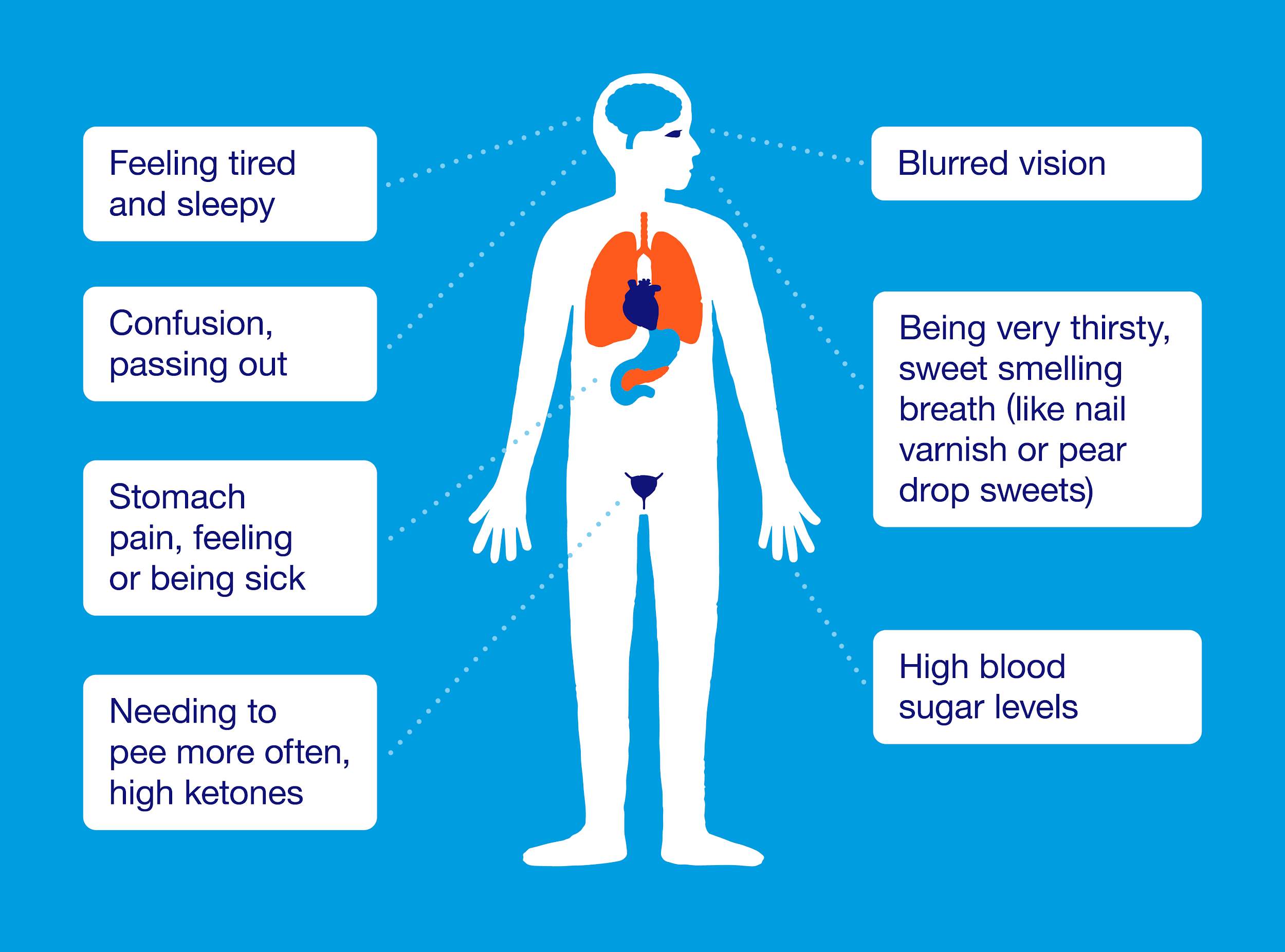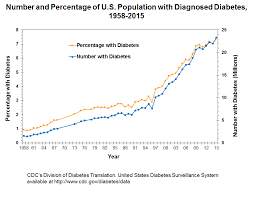Cause of Type 1 Diabetes
Right now, there is no precise answer for what causes type 1 diabetes. The immune system eliminates and kills insulin producing cells in the pancreas. Possibly genes could be the reason in some cases, the National Center for Biotechnology Information states, “Type 1 diabetes is what is known as a 'complex trait', which means that mutations in several genes likely contribute to the disease. For example, it is now known that the insulin-dependent diabetes mellitus (IDDM1) locus on chromosome 6 may harbor at least one susceptibility gene for Type 1 diabetes.” Hence, genes could be a major reason for causing and increasing the risk of type 1 diabetes. There’s also speculation that a virus could launch the immune system to destroy insulin, Christophe M. Filippi from the La Jolla Institute for Allergy and Immunology, La Jolla, California writes, “A significant number of viruses have been associated with type 1 diabetes, including enteroviruses such as Coxsackievirus B (CVB) (4), but also rotavirus (5,6), mumps virus (7), and cytomegalovirus (8).” Diabetes can definitely be caused by viruses as shown by studies linking viruses to the loss of insulin-creating cells. Environmental factors could also very much influence your type 1 diabetes such as growth, obesity, puberty, low physical activity, trauma, infections, sugar intake, and much more. Diabetes can also be inherited from your parents and is an autosomal disease but can either be dominant or recessive.


Cause of Type 2 Diabetes
Just like type 1 diabetes, type 2 doesn't have an exact cause but there are things that increase your chances of having it. What we know so far is that type 2 diabetes comes from a combination of genetics and lifestyle factors. The condition can be hereditary and may run in families, the Genetic Home Reference states, “Type 2 diabetes does not have a clear pattern of inheritance, although many affected individuals have at least one close family member, such as a parent or sibling, with the disease. The risk of developing type 2 diabetes increases with the number of affected family members.” So if there are high amounts of people with diabetes in your family your chances of having diabetes are highly likely. Family members may share genes that increase the chances of being overweight, and being diagnosed with diabetes. However, just because you have increased chance of having diabetes doesn't mean that you will 100% have it you can very much avoid the disease by staying healthy and active. Environmental factors can also play a large role in type 2 diabetes. Overweight means that the cells in your body are not affected as much by insulin leaving your sugar levels uncontrolled. Also, your parent’s eating habits or others around you may pass down their habits onto you and lead to you developing diabetes. Another interesting cause of diabetes is gene mutations, the Healthline website reveals, “Scientists have linked several gene mutations to a higher diabetes risk. Not everyone who carries a mutation will get diabetes. However, many people with diabetes do have one or more of these mutations.” For that reason, gene mutations could be a common cause of diabetes with the new found research.
Symptoms/Characteristics
The symptoms of type 1 diabetes may start quickly, however type 2 diabetes could form affects over a long period of time that may be so mild you would barely notice according to the NIH: National Institute of Diabetes and Digestive and Kidney Diseases. When there is no insulin to regulate sugar levels in their body, it causes their glucose levels to rise and symptoms may quickly form as reported by Daphne E. Smith-Marsh , the author of the article “Type 1 Diabetes Symptoms”. The effect of high sugar on their well being could be very damaging and scary, “The excess blood sugar in diabetes can wreak havoc on blood vessels all over the body and cause complications. It can severely damage the eyes, kidneys, nerves, and other body parts; cause sexual problems; and double the risk of heart attack and stroke.” stated in, How Type 2 Diabetes Can Damage Your Body written by the health.com website. Diabetic’s lives will be heavily affected by how much care they will need to put in for diabetes. They will constantly need to stay healthy and be on top of all their needs such as, their diet, exercise, and sugar levels. If not treated properly, diabetes can have severe long term effects like eye's issues, leg, and heart issues to name a few. Lifespan of a diabetic could be lowered significantly. “A 55-year-old male with type 2 diabetes could expect to live for another 13.2–21.1 years, while the general expectancy would be another 24.7 years. A 75-year-old male with the disease might expect to live for another 4.3 -- 9.6 years, compared with the general expectancy of another 10 years.” Studies shown from the article, “Type 2 diabetes and Life Expectancy” by the website Medical News Today. The life expectancy being lowered by several years just shows how much diabetes may affect a person’s life sadly. Diabetes is also a chronic disease meaning that it will last for a lifetime. Some characteristics of a diabetic can be overweight or underweight, messed up feet, and more.

Symptoms
According to the medical author, John P. Cunha, a writer of the article “Diabetes Early Symptoms and Signs”, symptoms of diabetes include:
● Excessive thirst and hunger
● Frequent urination (from urinary tract infections or kidney problems)
● Weight loss or gain
● Fatigue
● Irritability
● Blurred vision
● Slow-healing wounds
● Nausea
● Skin infections
● Darkening of skin in areas of body creases (acanthosis nigricans)
● Breath odor that is fruity, sweet, or an acetone odor
● Tingling or numbness in the hands or feet
Treatment
There is no complete cure for diabetes where they will be able to reverse it, however, there are many ways to lower and normalize blood sugar levels. One way is insulin medication where they take insulin that their body can’t produce or can’t make enough of to take care of glucose levels. Diabetics should be frequently taking down the records of their blood sugar levels. Change of diet. Diabetics can switch to a vegetarian diet, lower red meats, increase fiber intake, fewer carbs, and more. Avoid being overweight. Exercise also helps with metabolism. They should never skip sleeping and get plenty of rest. Drink lots of water and no alcohol. A bunch of protein and healthy fats are good to keep full. Avoid smoking and processed foods. Lower stress levels. Do not overeat. These are the main ways to treat diabetes

Associations
A list of associations and support groups affiliated with
Diabetes:
● American Diabetes Association
● Children's Diabetes Foundation
● The diaTribe Foundation
● DiabetesSisters
● Diabetes Hands Foundation
● Joslin Diabetes Center
● Taking Control of Your Diabetes (TCOYD)

EVERYTHING ABOUT DIABETES by Eric Heng
Diabetes, mellitus is a disease that involves your blood sugar being too high. The first case of diabetes dates back to about 1550 B.C. where a physician discovered ants being attracted to urine. It eventually led to them detecting sugar in the urine. Then, diabetes was found, leaving scientists to search for a cure, and soon to discover insulin, which is a hormone that allows your body to use sugar or carbohydrates as energy and stops blood sugar from getting too high or low. . There are two main types of diabetes, which include type 1 and type 2. Type 1 is when your pancreas isn’t able to produce insulin, Type 1 can occur at any age but usually occurs in younger people and is currently affecting around 1.25 million people in the US. Type 2 on the other hand, has affected way more people having reached around 30 million people in the US with type 2 diabetes. This type of diabetes means your body can’t produce enough insulin for your high sugar intake. Type 2 is usually considered a more mild version of type 1 diabetes but about 90% of diabetes cases are type 2. Type 2 also can also occur at any age, but it is mostly occurring in adults around the age of 50 or more but more and more young people are now developing prediabetes. Around 1 of 3 adults in America have prediabetes where they are very close to developing type 2 diabetes. Diabetes seems to affect and occur in native Americans, Hispanics, African-Americans, and asian-Americans who all have a higher chance of developing diabetes. Diabetes is a rapidly increasing problem with an estimated 415 million people in the world with diabetes currently.

Bibliography:
- 29, February. “How Type 2 Diabetes Can Damage Your Body.” Health.com, 29 Feb. 2016, www.health.com/condition/type-2-diabetes/how-type-2-diabetes-can-damage-your-body.
- Cunha, John P. “12 Early Diabetes (Type 1 & 2) Symptoms & Signs in Men.” MedicineNet, MedicineNet, 8 July 2019, www.medicinenet.com/diabetes_symptoms_in_men/article.htm.
- Department of Health & Human Services. “Diabetes - Long-Term Effects.” Better Health Channel, Department of Health & Human Services, 31 Jan. 2015, www.betterhealth.vic.gov.au/health/conditionsandtreatments/diabetes-long-term-effects.
- “Diabetes.” World Health Organization, World Health Organization, www.who.int/news-room/fact-sheets/detail/diabetes.
- Filippi, Christophe M., and Matthias G. von Herrath. “Viral Trigger for Type 1 Diabetes.” Diabetes, American Diabetes Association, 1 Nov. 2008, diabetes.diabetesjournals.org/content/57/11/2863.
- Huizen, Jennifer. “Type 2 Diabetes and Life Expectancy.” Medical News Today, 2019, www.medicalnewstoday.com/articles/317477.
- “Is Diabetes Hereditary? Facts on Type 1, Type 2, and Gestational Diabetes: Everyday Health.” EverydayHealth.com, 2 Aug. 2018, www.everydayhealth.com/diabetes/genetics/.
- National Center for Biotechnology Information (US). “Diabetes, Type 1.” Genes and Disease [Internet]., U.S. National Library of Medicine, 1 Jan. 1998, www.ncbi.nlm.nih.gov/books/NBK22256/.
- Smith, Daphne. “Type 1 Diabetes Symptoms.” EndocrineWeb, 7 June 2018, www.endocrineweb.com/conditions/type-1-diabetes/type-1-diabetes-symptoms.
- “Symptoms & Causes of Diabetes.” National Institute of Diabetes and Digestive and Kidney Diseases, U.S. Department of Health and Human Services, 1 Dec. 2016, www.niddk.nih.gov/health-information/diabetes/overview/symptoms-causes.
- “Type 2 Diabetes - Genetics Home Reference - NIH.” U.S. National Library of Medicine, National Institutes of Health, ghr.nlm.nih.gov/condition/type-2-diabetes.
- Watson, Stephanie. “Everything You Need to Know About Diabetes.” Healthline, 2018, www.healthline.com/health/diabetes.
Cite This Work
To export a reference to this article please select a referencing style below:
Related Content
All TagsContent relating to: "diabetes"
The term “Diabetes” is known widely as a disease which affects people who are overweight; although this disease is a common side effect which comes with being unhealthy, there are many other types of this disease that affect people who have no control over it. Diabetes is a condition with a group of different sub-conditions where the body cannot regulate blood glucose.
Related Articles


